The COVID-19 virus isn't gone, but rules have been relaxed. So, doc, what do I do now?
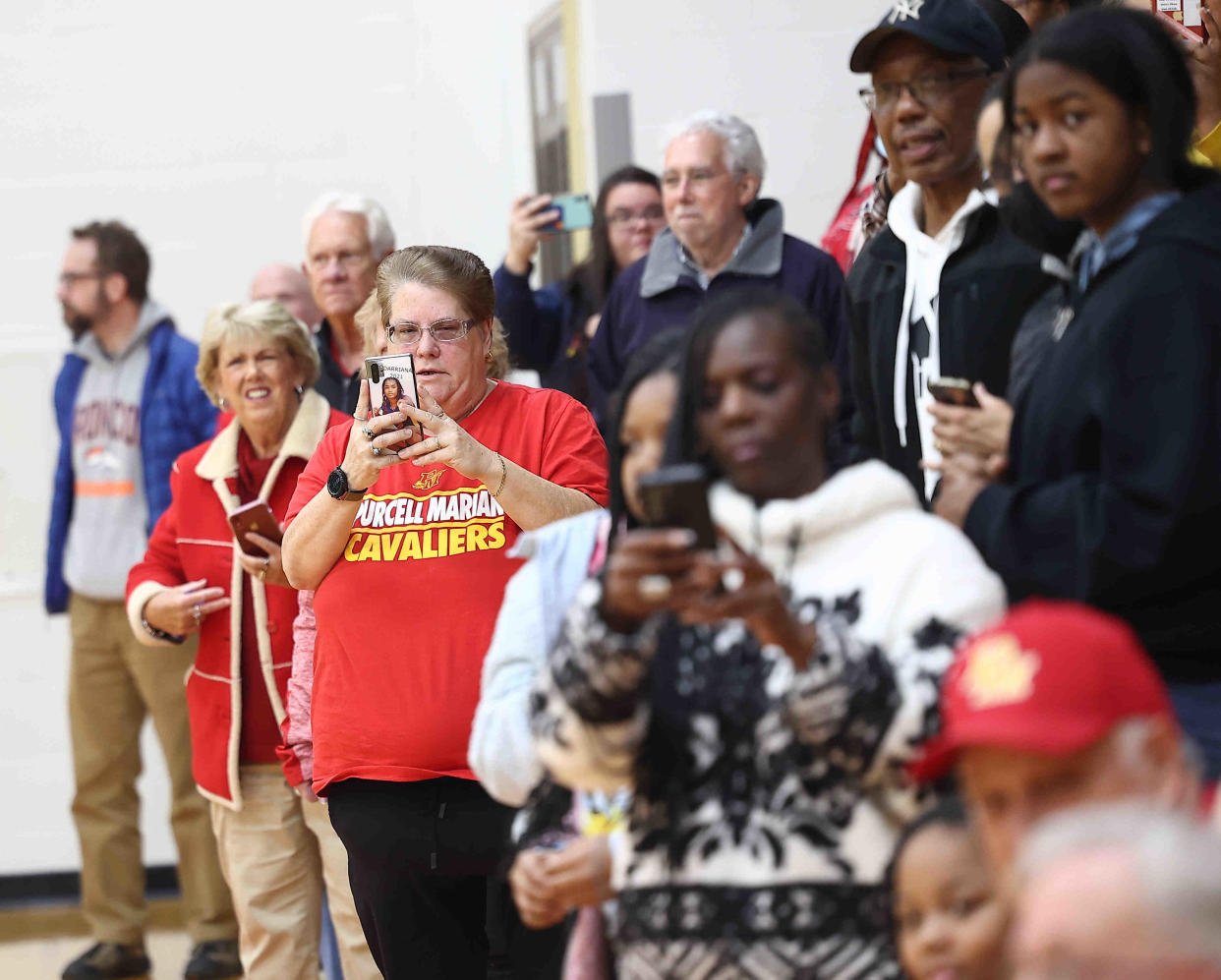
You've seen the changes up close. Maybe too close for some people's comfort, though others are cheering.
As of early March, less than 3% of public school districts in Ohio were requiring masks for some or all students. Most districts in the Cincinnati region are mask-optional, including Cincinnati Public Schools. The Ohio Department of Health announced March 10 that it would end daily reporting of COVID-19 cases.
A lot of stores have ripped 6-feet-apart stickers from their floors. Go to the grocery store and you'll likely be, literally, face-to-face with a lot more people than you have been in the last two years.
But we've also had a lot of cultural and social change during the pandemic. Who shakes hands anymore? Who stands shoulder-to-shoulder in a crowd?
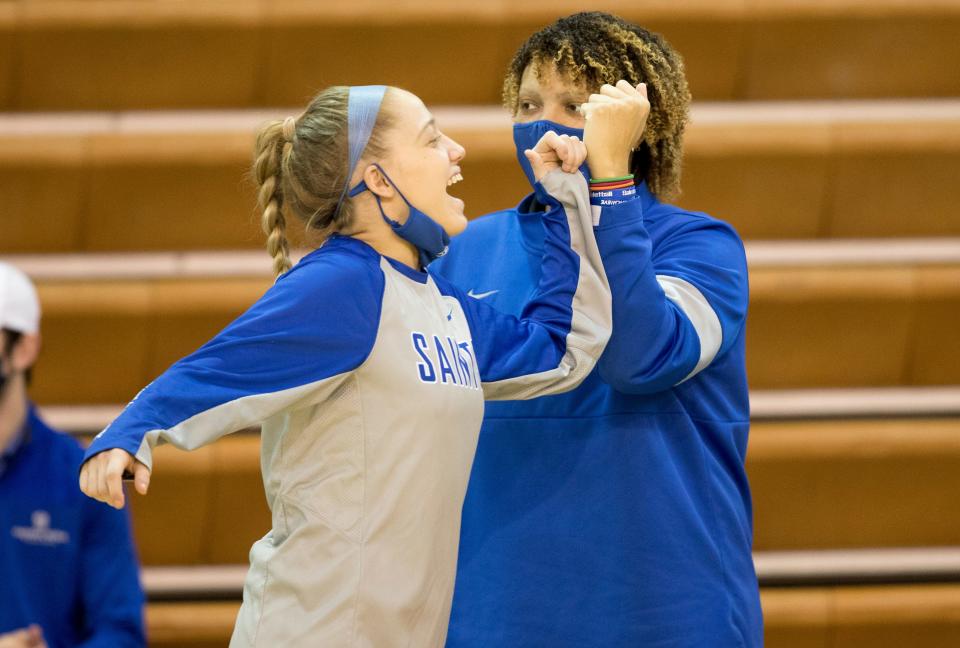
Because of the shift in the COVID-19 pandemic landscape, The Enquirer asked several medical experts, "Now what are you doing, doc?"
Here's who responded:
Dr. Jennifer Forrester, associate professor of infectious diseases at the University of Cincinnati College of Medicine and associate chief medical officer at UC Health.
Dr. Thomas Lamarre, infectious disease specialist, the Christ Hospital.
Dr. John LaCount, pediatrician, St. Elizabeth Physicians-Florence.
Dr. Daniel Murphy, critical care medicine, Mercy Health.
Dr. Kyle Darnell, critical care medicine, pulmonology, sleep medicine specialties, Mercy Health.
Dr. Carl Fichtenbaum, infectious disease specialist at UC Health and the University of Cincinnati College of Medicine.
Would you shake hands with someone? (Or continue elbow bumps?)
Forrester: "Yes, I will shake hands. I also keep my hand sanitizer handy (for example, in my purse and car). The COVID-19 virus (and other respiratory viruses) aren't spread by hand-to-hand contact. Washing or sanitizing hands before eating or touching your face can help protect you from lots of different viral and bacterial diseases."
Lamarre: "Continue to favor elbow bumps, not only to protect against COVID-19, but other respiratory and GI (gastrointestinal) illnesses. If you shake someone's hand, make sure to wash your hands immediately."
LaCount: "Unless both individuals can and do wash their hands after shaking, fist or elbow bumps would be preferable."
Darnell: "I have already resumed this practice but to a much lesser extent than prior to COVID-19."
Fichtenbaum: "Shaking hands is OK, just sanitize afterwards."
Would you stand closer than 3 feet away from others indoors, such as at a check-out line at a grocery store?
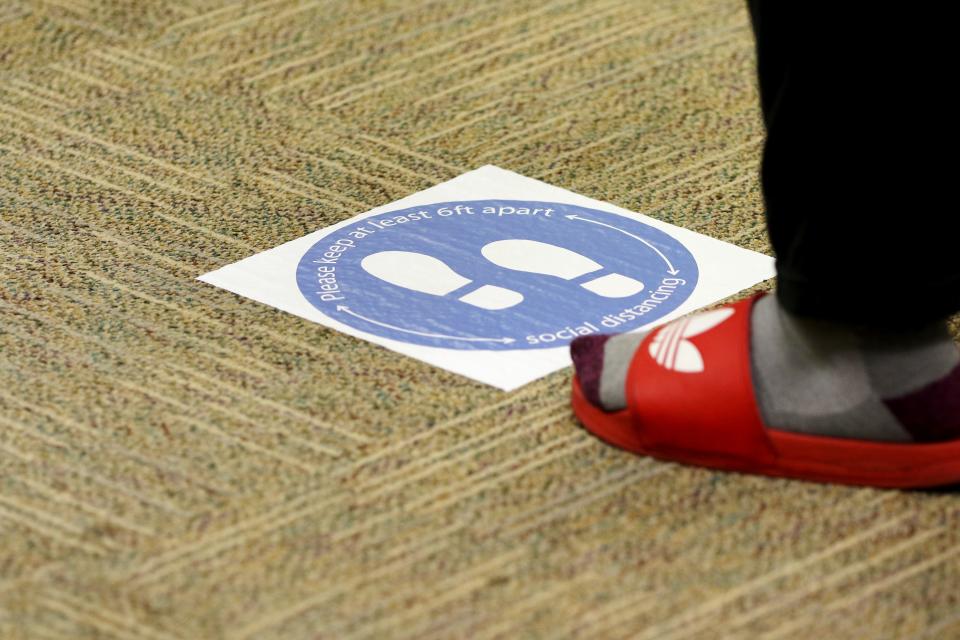
Forrester: "I have learned that I really like my personal space and it seems many other do as well, so I'll still keep my distance when possible."
Lamarre: "I think social distancing when able still has a place, again, reducing risk of COVID-19 as well as other respiratory and GI (gastrointestinal) illnesses."
LaCount: "I think statistically, the further you are from someone, the less chance you will contract illness from them. If you pay attention to what you touch, where you are, I think it is healthier. We have seen a marked increase already in school children with strep, or other infections as the awareness has decreased and masks have become optional in school."
Murphy: "I hadn’t really thought about this one, but I’d prefer 3 to 6 feet to be the norm. I was recently at the airport and when crammed in for the security line I missed social distancing and was glad I was wearing a mask."
Darnell: "I have already resumed this practice."
Eat in a restaurant? Go without a mask before and after a meal?
Forrester: "I haven't gotten there yet. I am excited to use the outdoor seating options as the weather improves. I hope that if infection levels continue to drop and we learn more about vaccination and immunity, I'll be able to enjoy my favorite restaurants inside, too."
Lamarre: "I think eating in a restaurant without wearing a mask is reasonable and low risk at this time."
LaCount: "I have been hesitant to go to some restaurants, but in public places, I continue to wear a mask to prevent potential exposures. My preference is for outside dining. For immunocompromised or others with concerns, take-out would remain a better option to minimize any potential exposure. When outside, I think it is reasonable to not use a mask."
Murphy: "With numbers down so far following omicron, my family and I have started going to restaurants again. With the tables still spaced, I’m comfortable not wearing a mask."
Darnell: "I have already resumed this practice."
Hand hygiene has been top-of-mind. Should we continue our new habits?

Forrester: "100% yes. Respiratory viruses and GI bugs can be avoided with hand washing. Having hand sanitizer stations widely available, especially where crowds are congregating or where eating is happening, would be great."
Lamarre: "Hand hygiene is always important – this has not changed. The lessons we learned with COVID-19 apply to many communicable diseases. Further, practices that are routine become habit."
LaCount: "The hand hygiene is the primary problem we have always attempted to address. This has not always been an easy issue. Our hope is that people are more aware of the need to minimize spread of disease by using better washing of hands for their family."
Darnell: "Hand hygiene has always been important and has long been under-practiced. The threat or lack of threat of COVID should not have changed our practice of good hand hygiene."
Fichtenbaum: "We should definitely wash before we eat and after shaking hands or going to the restroom. We need to wash our hands more!"
Some entertainment venues no longer require vaccination cards or testing proof. Would you go?
Forrester: "I presume I come in contact with unvaccinated or even possibly infected people wherever I go, so this doesn't change a lot for me. I measure that risk with how close I am to people I don't know and for how long. I think about how I can protect myself and my family – for example, by masking – when I decide to go somewhere."
Lamarre: "I think the benefits of event screening, whether that included proof of vaccination or a negative test), were overstated. I would attend at this time. Currently, the risk is low."
LaCount: "I would not use entertainment venues that do not require proof of vaccination. Alternatively, providing proof of a negative test 48 hours prior to the event would be appropriate."
Darnell: "I believe the best protection an individual can provide for themselves is a good quality mask, not a cloth mask. With this in mind, I have resumed my practice of going to entertainment venues but will vary mask wearing based on risk. Risk assessment is twofold: personal and regional.
Fichtenbaum: "I think this is fine at present given rates of community transmission of COVID-19."
At least one local theater no longer prevents guests eating or drinking during a live performance. Would you do this?
Forrester: "I probably wouldn't be inside with others close to me for an extended period of time when we are both not masked at this point. I am taking down each layer of protection, distance, ventilation, masking, one by one – not ripping off the Band-Aid. Eventually, if infection levels continue to decline and we learn more, I hopefully will be more comfortable with this type of activity."
Lamarre: "I would. The risk is low at this time."
LaCount: "I have not returned to theaters at this time. I am not seeking conflict with other patrons and do not wish to have to do so. Since many people refuse to wear masks, until risk is no longer an issue I choose to use streaming for content."
Would you encourage telehealth as a health-safety measure?
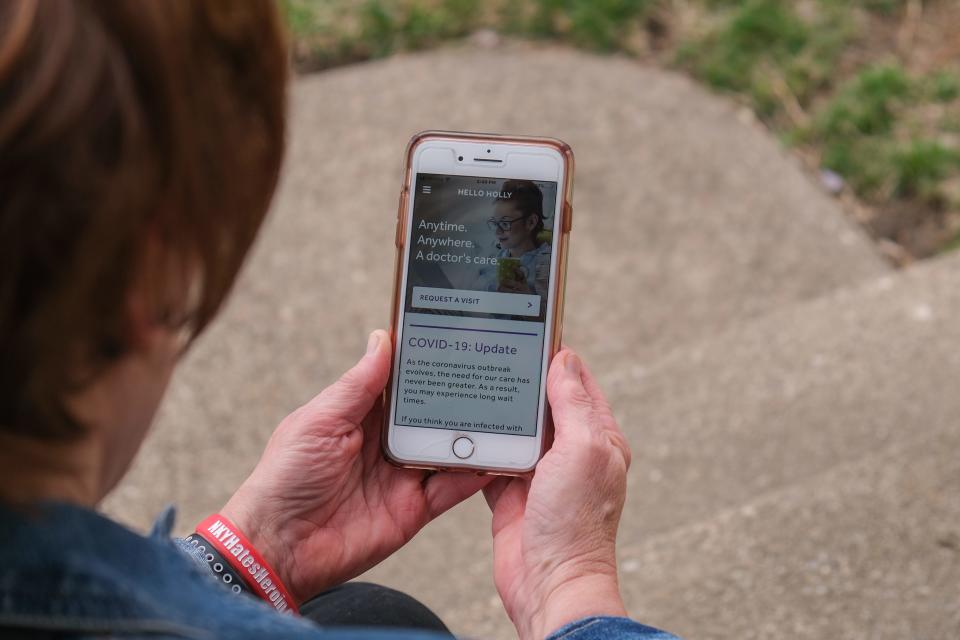
Forrester: "This works for some situations and not others. I am happy to see most people in person, but sometimes it's more convenient for my patients to do a tele-visit."
Lamarre: "I think telehealth has a place in healthcare, but I do not think it needs to be encouraged as a safety measure at this time. Hospitals and physician offices are safe for patients. The decision surrounding a telehealth visit should be determined between the patient and their physician or other provider."
LaCount: "Yes, telehealth has been valuable to providing an option for not only minimizing risk of exposure to office staff, but also facilitating our ability to continue to provide services in the office to others who need direct contact for things like physicals, immunizations."
Darnell: "I do not believe this provides any health-safety but has been valuable for those with transportation issues. For example, individuals in the nursing home have relied on expensive transport companies. With telehealth, this has been eliminated."
Would you keep your child home with sneezing, a cough or a temperature above 99?
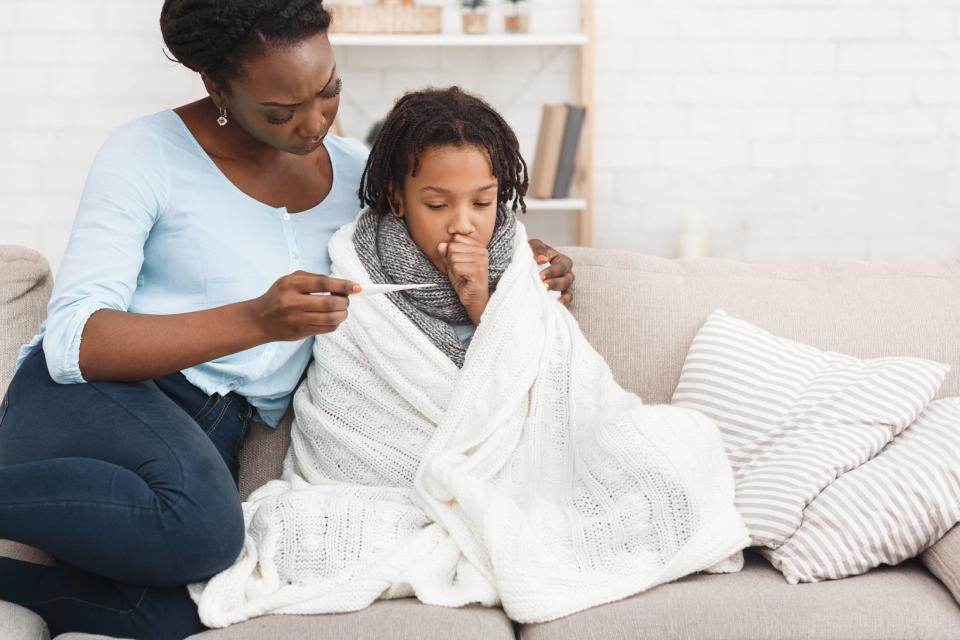
Forrester: "Yep. Whether they have COVID, the flu, or another infection, I want to make sure that other kids don't get sick."
Lamarre: "I think if a child is sick, keeping them home is important to prevent spread to others, working in concert with the school nurse or child's physician or other provider. If there is a concern for COVID-19, the child should be tested."
LaCount: "With sneezing at this time of year, a temperature of 99 is normal, so for that scenario no. Coughing is dependent on the degree it is occurring. In a mask-wearing child I would contend it is not necessary. Unmasked children make things a little more questionable. I think in that situation, it is potentially appropriate.
"If children have not missed excessive days, schools can make it easier to facilitate work completion by allowing families to switch to virtual instruction and minimize the amount of work missed. That flexibility has been less than stellar. This leads to multiple parents now having excessive missed days due to their requirements, or they send children home due to “illness”, necessitating parents having to bring the children in for a 'doctor' note. This is unnecessary to families in terms of time and cost."
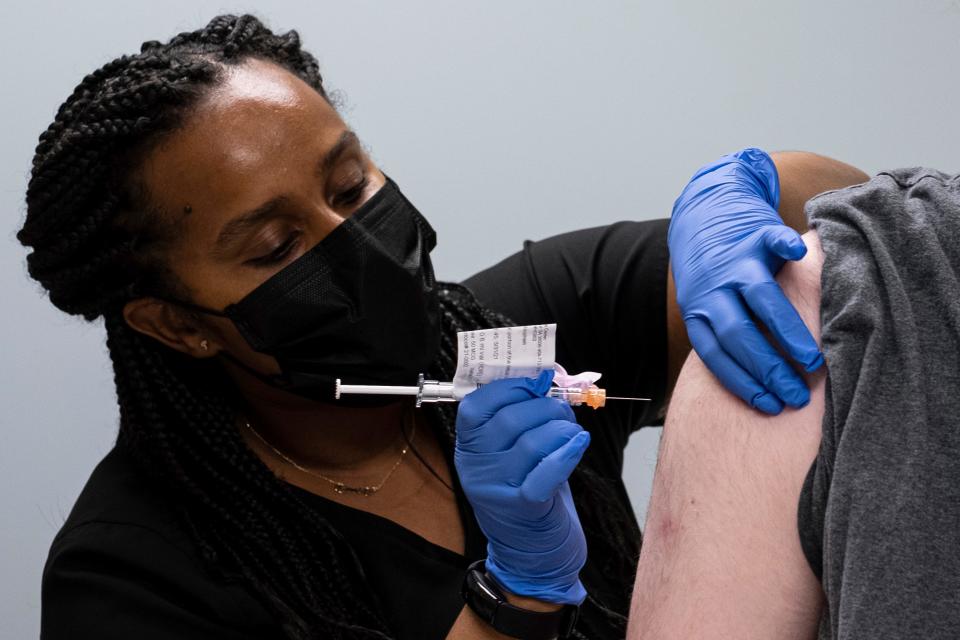
Would you recommend vaccination for all?
Forrester: "Before commenting on the youngest kiddos I'll wait for the data. But vaccines for COVID and other infectious diseases are really a marvel of science. I definitely recommend vaccination for most people, but there are exceptions that each person should discuss with their personal physician."
Lamarre: "Yes."
LaCount: "Yes, for all over 5 and eligible, it is recommended. If we do not vaccinate we are allowing a potential reservoir of uninfected, unvaccinated individuals to create another epidemic."
Murphy: "Hell yes. I personally took care of over 300 COVID patients since March of 2020 and about 110 of them died. Granted, I only see the severe cases. Of the deaths, there were only one or two that were fully vaccinated, but they got sick around the time we were learning that a three-dose was needed for elderly and immune suppressed patients."
What symptoms would you have before you’d take a COVID-19 test?
Forrester: "I have a pretty low threshold for testing myself and my kids. Generally a fever or new cough is reason for me to test, or any respiratory symptoms. I wouldn't want to expose others at work or school or an event. Even if the test is negative, though, if someone is sick, they can avoid spreading whatever they have by staying home."
Lamarre: "Fever, headache, muscle aches, runny nose, sinus symptoms, sore throat, rash, cough, nausea, vomiting or diarrhea."
LaCount: "Currently, COVID has identical symptoms to any flu-like illness: fever, cough, congestion, lack of smell, loss of taste would be potential indicators of possible infection. Direct exposure to someone who has had the illness would be another reason to rule out an infection. Having relatively recently experienced symptoms, I would note, the first day of symptoms was fever, with some aches and pains."
Darnell: "With a home COVID test, my threshold is significantly lower. I keep a test at home and test with any symptoms that could be consistent with COVID."
Fichtenbaum: "If you have cough, sneezing, sore throat, runny nose, headache, sinus congestion, change in taste or smell that is new, then call your doctor for testing."
Would you let your children attend school unmasked?
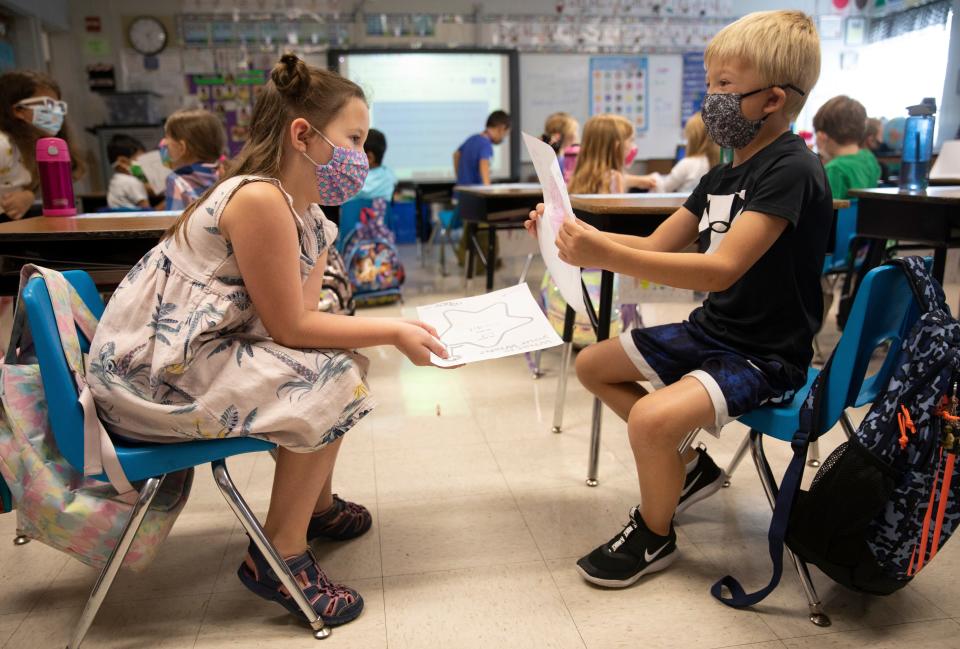
Forrester: "All my children are vaccinated, and they are in environments where most of their classmates are as well. They can take their masks off when sitting at their desk but not put them back on when changing classes in busy hallways. That being said, if the teacher or the kids around them chose to wear masks, my kids have learned that wearing a mask shows respect for others' decisions, too."
Lamarre: "Yes. It is low risk at this time."
LaCount: "If everyone was vaccinated yes. Since that has not yet occurred, no."
Murphy: "I feel I’ve already done everything I can to protect them. I have three children and my older than 12-year-olds are vaccinated and boosted. My 6-year-old is vaccinated. If more shots are recommended, then we will all get them. My 12-year-old chooses to still wear a mask, but I told him I don’t think he needs to anymore. I haven’t forced him to stop wearing a mask because I also think all the talk about “permanent psychologic damage” from mask wearing is utter nonsense.
"Kids struggle at times growing up and the masks are part of the fabric of their lives that will be a shared experience with their peers. No one liked it. But if kids in London could survive the blitzkrieg during World War II then our kids can handle wearing masks."
This article originally appeared on Cincinnati Enquirer: COVID-19 pandemic mandates relaxed: What Cincinnati docs recommend

